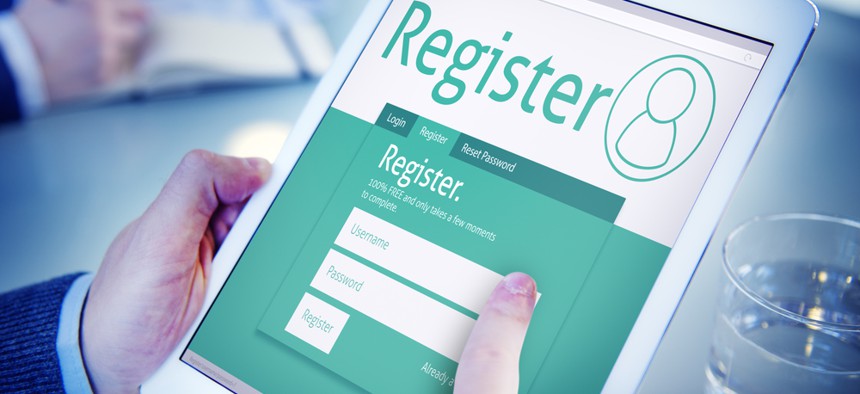sponsor content What's this?
Putting an End to the Paper Trail

Presented by
Adobe

Using digital forms to speed-up workers’ compensation and care.
When workers get injured either on or off the job, they need immediate medical care and financial support for lost wages. But filing a compensation claim through the federal government has not always been easy, adding to the uncertainty already surrounding this life event. And the paper trail — plus the time it takes to complete and file all paperwork — can at times take weeks, if not months.
The project was driven by the then-Deputy Director of the Department of Federal Employees’ Compensation Antonio Rios, who made the strategic decision to improve the digital experience for federal employees, and through the development of a single, digital form for all compensation requests, reduced the time it takes to handle requests. In fact, the timeliness rate has increased by about 18 percent for applicants filing for a time loss claim.
Under the new system, the paper trail ends and digital documents take their place. Federal employees from over 80 different agencies can access and file claims using ECOMP, an online, self-service form portal. It has dramatically sped up the claims request process, said Julia Tritz, Deputy Director of Operations and Claims Management for Federal Employees’ Compensation at the Department of Labor.
“We’re seeing a marked increase in timeliness for agencies using ECOMP,” she said.
“Seeing these improvements give us confidence that our platform is helping workers.”
The numbers alone can seem daunting. The federal government insures more than 2 million people. In 2012, approximately 115,000 claims were filed with $3 billion in pay-outs to injured civilian employees. This means that on any given day the Department of Labor will receive up to 25,000 documents to support claims. This is because usually within each case there are dozens of supporting documents, including doctors notes, medical reports and official testimonies.
“Before there were multiple manual steps such as document search and retrieval process, scanned documents were often hard to find,” said Ben Elmore, CEO with Twin Technologies. His company worked alongside another lead federal contractor, ASRC Federal, to implement the vision set forth by the Department of Labor leadership. “We always kept in mind that we had a real opportunity to be a positive impact on a federal employee that was in a time of crisis and to agency we were in service to. We wanted to speed up the claims request and approval time that could take up to a period of months — to a few weeks.”
The switch to digital forms not only helped to meet the mission but also budgetary needs, Elmore said. Under the old system there were significant costs printing, mailing and scanning in addition to the internal resource time require for a single document to process that savings were realized against.
ECOMP utilizes Adobe Experience Managers Forms, part of Adobe Marketing Cloud. Having that platform kept efficiency, security and customer experience top-of-mind, Elmore said.
“This project showed us how technology can be truly disruptive to government in a positive way,” Elmore said. “As we approached the application, we kept in mind the need to address the unique constraints of the user, the agency and the technology itself. This help drive the right level of innovation and focus.”
That focus drove the building of a digital experience that included an accessible and transparent way for federal employees to check-up on a claim that they filed. It also understood that extending the reach was required so that different employees and other third parties — such as doctors and nurses — could effectively self-service their portion of a compensation claim request.
“One of our goals was to remove the uncertainty that people generally have in a crisis situation, and we did this with digital communications and applications that keep people on track with their claim status,” Elmore said.
In order for the project to succeed, Elmore and his team had to envision a service that emphasized accessibility and security at its core. They thought about making it easier not only for the person filing, but also for the third-party groups involved in the claim review process.
In certain circumstances in the past, if a manager at a federal agency needed to review a worker’s compensation case, they had to physically travel to review the sensitive documents, held at the district office for the Division of Federal Employees' Compensation.
With digital rights management tools in place, the need to review a case in-person has been eliminated. Document security tools, part of Adobe Experience Manager platform, make file access secure. Instead of leaving the office, managers can now view digital files from their work stations while ensuring protection from unauthorized access, printing or copying.
Behind the switch to digital was the core idea that digital government experiences not only benefit the constituent, Elmore said, but also go a long way toward fulfilling the agency’s public mission.
“Employee compensation is really significant. Families and livelihoods depend on it,” Elmore said. “We started this project first thinking about the mission of government and the people it serves. From the beginning to the end this modernization effort was about giving government the opportunity to serve it mission better.”
Read more about how government is creating unique and engaging digital experiences for citizens.
This article was produced on behalf of Adobe by GEMG Custom Strategies, the marketing services division of Government Executive Media Group. The editorial staff of Nextgov was not involved in its preparation.


